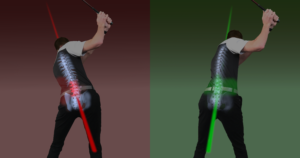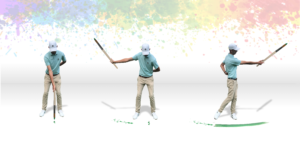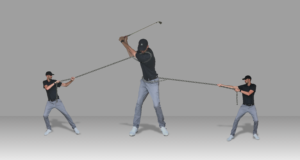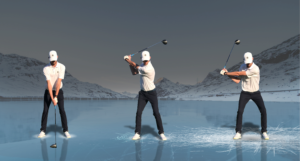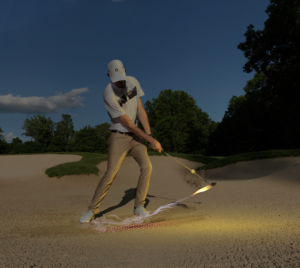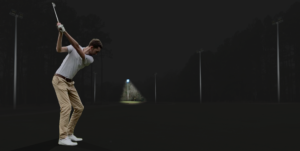‘Lag”…. A must have in your swing in order to create greater power and gain more distance. But how do we create lag? And how can we create lag without sacrificing other major components of of our swing?
Here I will discuss lag in order to give a better understanding of the principles and how we can incorporate into our swing without affecting other major components of the downswing.
What is lag? And Why Is It So Important?
Lag by definition is the ‘fall behind in movement, failure to keep up with another object in movement or development’.
Simply translated to the golf swing, lag is defined as the angle created between the shaft and the lead forearm. This angle is created due to the club head falling behind the movement of the hands and arms.
It’s this change in angle which provides a load in our wrists. This in turn allows us to make an very simple efficient release of the wrists which significantly increases club head speed.
Lag is obviously a very big part of creating power and energy in the downswing. However we don’t want to sacrifice accuracy and ball striking in order to gain few extra yards.
How do we create lag?
Lag is initiated in the downswing. This is a big reason why I don’t encourage focusing on specific swing positions to hit on the way down to impact.
There isn’t enough time between the top of the backswing and impact for you to consciously and accurately get the club in a desired position, especially when we are on the course or a competitive environment.
I rather players improve positions through their backswings or focus on transitional feelings. This gives them more time and control to get in a good position at the top, and transitional feelings allow us to ‘react’ as oppose to ‘think’.
Check out these articles on to efficiently load the back swing.
>> Creating Power in the Backswing <<
>> Wrist Hinge In the Backswing <<
The are a number of factors that will create lag in the swing. Primarily lag is a product of the change in direction at the top of the back swing and it’s the forces produced on the club which in-turn loads the wrists.
Club weight, grip pressure and speed of change in direction are a few of the main contributing factors that produce the forces that efficiently load the wrists.
Some Thoughts To Focus On
Grip Pressure at the Top of The Swing:
This is very much an untouched topic with regards to lag. Higher grip pressure and tension in the hands, wrists and arms will prevent these levers from working freely and effectively.
Keeping grip pressure light, throughout the swing, will allow the wrists and shaft to load at the top.
Speed Of Change in Direction:
The hands work in an arc from a low position at address to a high position at the top. Therefore pulling the hands down vertically and maintaining width will create a significant change in direction.
This is a dynamic motion and an extremely efficient way to create lag in the swing, without consciously getting into a position.
Pull The Golfing Gods Down To Earth:
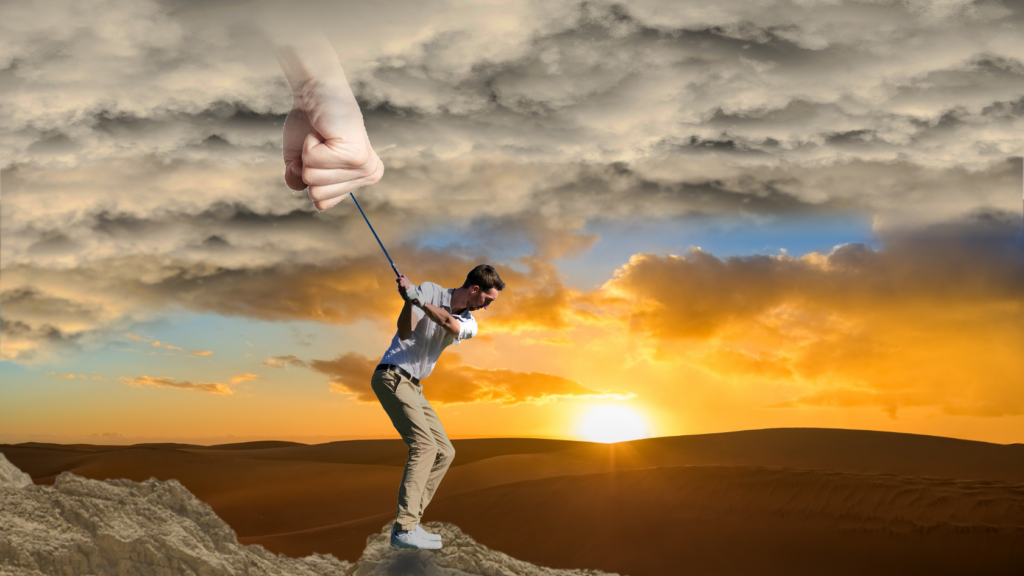
Having a sensation that someone is holding/resisting your club at the top of the swing will allow you to improve your speed at which you change direction, without losing control in the downswing.
This will also initiate a positive sequence in the beginning of the downswing. Working against this ‘pull’ will encourage a squatting, ‘brace’ motion. This allows the club to get back in-front, which will prevent getting stuck at impact, and won’t sacrifice the load created by the lag.
>> Check out this article on transition in the lower body <<
Summary
Lag is an important aspect of the swing. But too much focus and manipulation to try and achieve this can cause smaller muscles to dictate the downswing. These smaller muscles when timed right can produce fantastic results. However they can create a greater margin for error.
If your consciously trying to create lag in your downswing the chances are your not going to be overly successful.
When addressing lag in your swing try and focus on actions in your backswing that allow a lag motion to be much more of a reaction to the downswing.
Also the transitional thoughts I mentioned are reactions in their own right. This will help you commit and make a positive move through impact.

